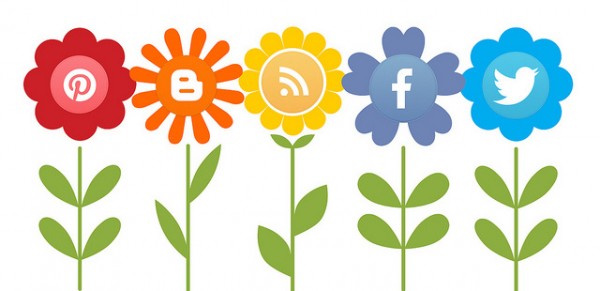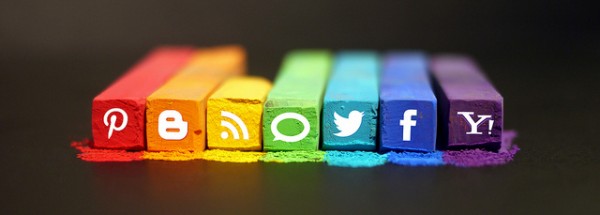Social media has become an accepted communications channel and as such, an essential component of effective public relations strategy. The term “social PR” is used more and more frequently—although the exact definition differs depending on who you ask.

According to Richard Binhammer, principal at Binhammer Social Business & Corporate Communications Consulting, “the Web and its evolution from a static to interactive medium continues to change how we think about and engage with customers, investors, employees/suppliers and the communities that impact any business – the four main stakeholder groups for any business.”
Binhammer goes on to define what social PR is NOT, including tweeting your most recent press release or pitching a top blogger on a new product release. Actions like those, he states, are no more than tactical uses of social media to broadcast a message.
So what is “social PR”?
Australia’s Social PR Consultancy, describes Social PR as “…the absolute focus on the online space and social media platforms and technologies to establish and maintain mutual understanding between an organization (or individual) and its (or their) publics through a planned and sustained effort.”
According to social media strategist, Shonali Burke, principal of Shonali Burke Consulting, “…social PR is when organizations literally ‘socialize’ their PR programs from the get-go. What many companies and PR agencies (still) do is what they’ve done for decades (or centuries!): they try to push out their messages to the widest audience possible, primarily through the media. Now that social media’s proved to be more than a flash in the pan, they’ll then bring in a ‘social media guru’ to ‘do some tweets and Facebook posts’ or, worse still, leave it to an intern… and they’ll consider that ‘doing’ social.”
She continues, “Social PR turns that model on its head, and really looks at who the organization needs to have talking about it, and why; that ‘why’ is really important, because it makes sure we’re tying our outreach to business objectives. Sure, it could be ‘the media,’ or a certain segment thereof, but what about the people the organization ultimately needs to reach, and who can drive conversation and engagement? Those people are who a ‘social PR’ program will bring in from the get-go, and because they are so active online, social media and networks then become primary channels of communication, instead of secondary.”

What are some of the benefits of “social PR”?
Social PR centers around creating a sense of community among the people you most need to be your advocates and evangelists. Community building takes time but fosters a sense of belonging, which leads to personal investment in the campaign and its objectives. As you educate and engage the members of your community, they start to be motivated to tell your story for you, which is the ultimate endorsement.
The #HopeProject: an example of social PR in action
According to Shonali Burke, “…truly social PR also often leads to the development of an incredible body of content that can be used by various business units. For example, when the community is asking (and often answering) questions, your customer service team can draw on that collective intelligence, which shortens response times and/or leads to better answers. Your sales and marketing teams can essentially let the community do the selling for you, and community-generated content is often picked up on by mainstream media once they see it starting to get traction. So it’s really the gift that keeps on giving and, if it starts to see widespread adoption, could really be a game-changer for PR.”
One example of social PR in action is The #HopeProject, a campaign to provide micro-loans – individually and via social fundraising – to businesses started by India’s working poor. The #HopeProject specifically aims to fund businesses started by former Devadasis (women “dedicated” to the temple deity at a young age, and often forced into trafficking), so that they and their children can get a new lease on life.

The project is the result of collaboration between milaap.org and ASSET India Foundation. Milaap focuses on entrepreneurship as one of its primary impact areas, while ASSET looks to provide women (and their children) rescued from trafficking with livelihood skills and opportunities.
(Full disclosure: Milaap is one of Shonali Burke’s clients and I am a Champion of Hope volunteer working to help raise funds for these micro-loans.)
Everything about the #HopeProject is socialized. Instead of putting together a traditional PR program, The #HopeProject focuses on building a team of Champions of Hope, who commit to creating their own social fundraisers, to spreading the word, and to introducing Milaap to their families and friends. Champions of Hope are learning and sharing information about the organization and campaign as they see fit. This introduces the organization and the campaign to entirely new subsets of people and increases the potential for new supporters and lenders to join the effort.
“As the campaign kicks in, what we hope will happen is that the online conversation around #HopeProject will really start to be associated with Milaap and its work,” says Burke. “As more and more Champions come on board, we hope their family, friends and colleagues will be inspired to support them, perhaps even becoming Champions of their own. And as the Champions get more engaged, we hope the content that they generate – either short-form, through participation in digital events, or long-form, such as blog posts, will collectively contribute to awareness of Milaap and the campaign.”
On a tactical level, building the #HopeProject community involves layers of organization including the management of a Facebook group where Champions of Hope are provided with campaign updates, examples of successful campaigns and communications like Facebook and Twitter posts and tweets. The #HopeCampaign has held monthly Twitter chats, designed to build awareness and identify new audiences for the fundraising efforts.
Thank you for joining us for the #HopeProject chat! We’re so excited to be hosting this for the first time ever with you wonderful people!
— Milaap (@milaapdotorg) March 25, 2014
What motivates people to participate in social PR projects?
“I think people like to help their friends. They like to do good – there is no greater high than when you know you helped someone out in a very tangible way,” says Burke. “People they like to do good as a community. Helping out, listening, sharing… that’s what a community does. And when communities come together to do something, they often do the unthinkable, and achieve the remarkable.”
The #HopeProject has enjoyed success so far. Several of its Champions of Hope have already met their goals and the UK’s Montpelior Foundation has agreed to match donations to The #HopeProject made during the month of April. Interest in the project is building and new Champions are joining every day. Follow the #HopeProject hashtag for updates or to learn how you can be involved as well.
Interested in hearing more about social PR and current trends? Both Richard Binhammer and Shonali Burke will be speaking at the upcoming Vocus Demand Success 2014 conference in Washington, DC on June 5-6. Register today and plan to attend their sessions!
Allen Mireles is a strategist with an affinity for technology who lives/works at the intersection of social media and traditional marketing/public relations. Want to read more from Allen? Click here!
Image: mkhmarketing, mkhmarketing (Creative Commons)
Image: #ProjectHope Milaap![]()

